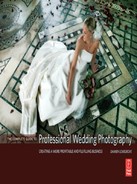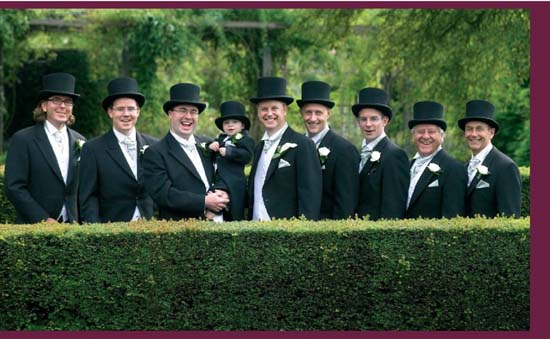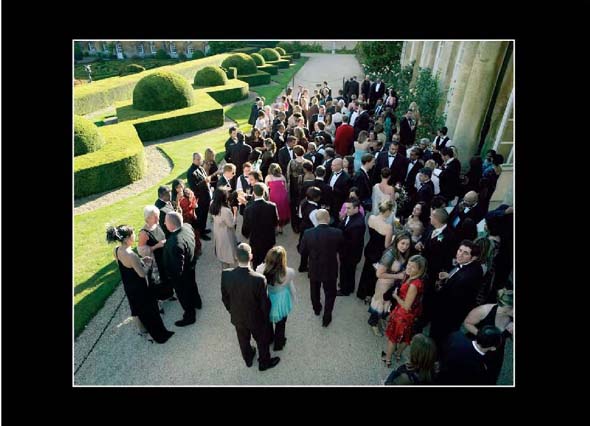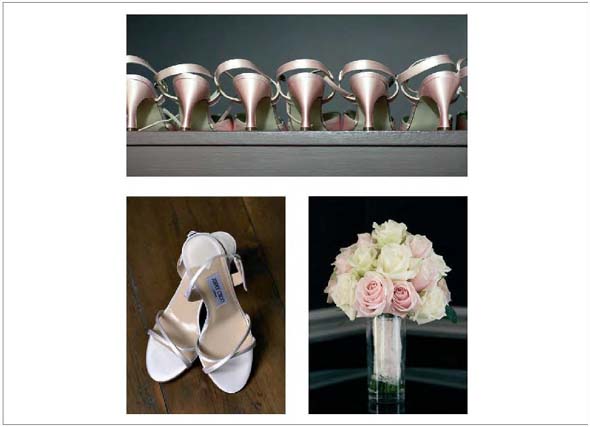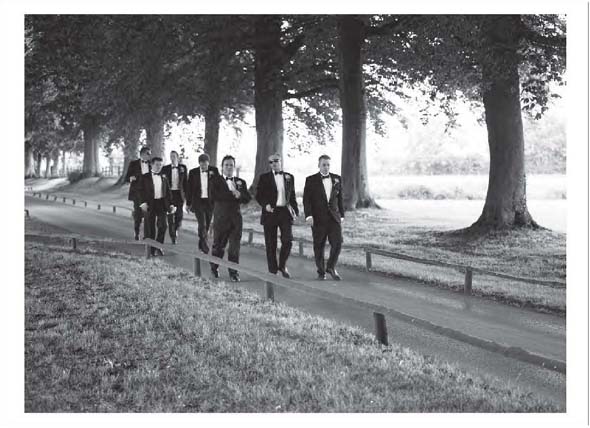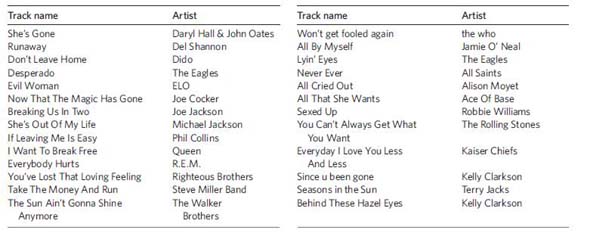Awedding photographer’s product base consists of abstract and immediate elements including service, creativity, experience, professionalism, and a range of items for sale. Some of these elements affect the value of your service now but are long forgotten in years to come. The product line I want to discuss is made up of the tangible items that the clients take away with them to show their friends, family, children, and eventually grandchildren. The most obvious product for a wedding photographer to provide is an album of prints. Ever since the dawn of photography albums of prints have been a core product for collections of pictures. This is changing and the change is fast. In 2007, it is quite normal for photographers to deliver their images to the client in electronic format. Some photographers resist the changes but ultimately the clients have their way. When planning your product line remember that wedding photography is a retail industry. The rules of retail business rarely change. There are two opposing arguments that regularly come into play. ‘Give the customers what they want’ and ‘Give the customers what they need.’ You could say these two arguments form the basis of world politics too. There is always a balance between morality and desire. In 2005, McDonald’s restaurant chain was under pressure to provide healthier meals, not by its customers, but by its critics. McDonald’s customers wanted burgers, but in some cases they needed salads. Careful repositioning of the brand took place to promote a healthier lifestyle. Salads and healthy meal options were introduced as a result. McDonald’s were careful not to alienate their loyal customer base and continued to offer a super size meal option too.
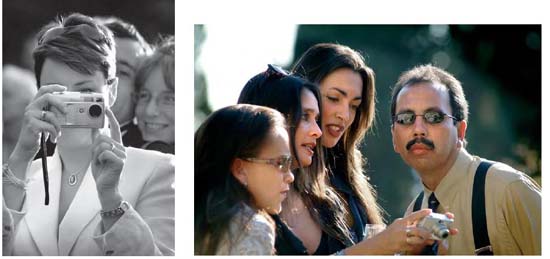
I find it amazing just how good a well-taken image can look at just a few hundred pixels wide on a screen of an iPod or on a website. All the information is there to provide the laughs, set the scene, and give the picture value.
How does this relate to wedding photography? Well, I suggest you aim to give your customers what they want and build your product line around their desire. You may choose to have additional products you feel compelled to offer to meet your responsibilities as you see them. We live in a time where immediate benefits are perceived as far more important than long-term benefits. Wedding albums with acid-free pages and fine prints produced on archival papers are what customers need to preserve their images for the enjoyment of their children and grandchildren in the years to come. However, the next generation of couples to get married are more likely towant digital files instead of prints. They will probably share their pictures using email, and by sending picture texts from their mobile phone. They may produce slideshows on DVD or make picture books using Apple’s iPhoto or other online book design software. Today’s public are happy to view their pictures on iPods and other low resolution personal electronic devices. The same revolution happened in the music industry with the rise of the MP3 format. For the most part, hifi has been replaced with reasonable quality sound from small, compact, inexpensive equipment. Convenience, portability, and instant access are the key to providing creative content to the new generation.
My only concern is about the long-term risk of losing valuable pictures as formats and systems change. I expect what goes around will come around and in years to come the album of fine prints may rule supreme again. Julie and I have chosen a portfolio of products that reflect these challenging times. We provide picture-only options supplying edited files on disk at high, medium, and low resolutions. We also offer Jorgensen album packages and have an à la carte menu for other products. The principal idea behind our pricing structure is that the client is buying the image not the bit of paper it is printed on or the disk it is stored on.
Don’t kid yourself that if you provide prints in an album you can force your clients to buy reprints. It is far too easy with today’s compact cameras for a customer to photograph every one of your prints in the main wedding album and have the pictures printed at a shop in the high street or via ftp over the Internet. The solution to the problem of substandard copies is to provide high quality files on disk of all the images in the album togetherwith advice on how and where to get great prints made. The solution to the loss of revenue through copyright abuse is to charge enough for your images in the first place.
Providing albums of prints has its own problems. There are a lot of costs and time associated with album production. Some photographers spend as much as a week designing, printing, and constructing a wedding album. Time is a valuable resource and ultimately your production capability may be the restricting factor in your wedding business. Being a photographer one day a week doesn’t seem like a challenge but making 50 wedding albums in a year might seem too much like hard work. Never undersell the wedding album. Use the finest materials to maximize the perceived value of your albums and you can charge enough money for each book to hire in-production help if you so wish.

This is the cover from an early Jorgensen show album of ours. Pictures inserted in the cover are rarely asked for nowadays.
Make your albums unique, give them a style, and keep them well beyond the capabilities of even your most creative clients. Stick to your design rules and produce albums that are self- supporting, complete bodies of work that have a continuity of style from cover to cover. In the example page layouts shown in this chapter, all taken from matted albums, we have used several design principles. We make all the ‘window bars’ the same size on every page of an album. The people in the images face into the spread rather than out of the album; the outside edges of each image on a page align to form a neat rectangle; and ideally each page has at least one plane of symmetry.
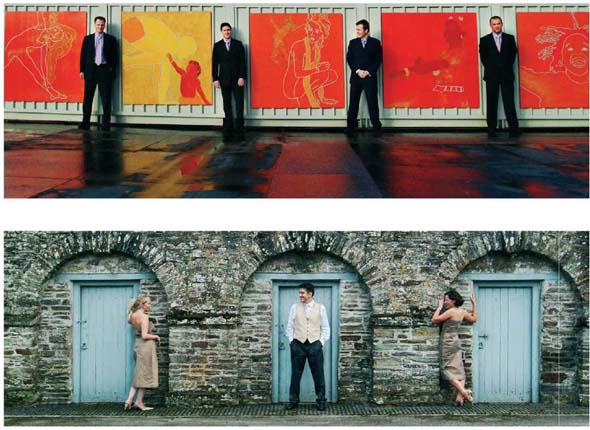
Figs 13 & 14 ISO 400 f9.5 at 1/350th and ISO 400 f/4.8 at 1/180th
Where repeating patterns occur I like to shoot square on for maximum impact.
We have found that over the past few years there has become a bigger demand for color images and now our albums have far less black and white prints as a result. When we supply our images on disk we always include a color option of all the images, even the ones that we think work better in black and white. The fashion of mixing color and monochrome images in the same album may well be on its way out too. A good indicator of changing styles is the editorial section of mainstream wedding magazines. In the UK magazines, there are no longer any black and white, spot color, toned, or tilted pictures. Keep an eye on the imagery that is inspiring your potential customers in order to spot new trends in picture style. Include them in your work if you want to stay current or avoid them if you want your picture style to stay timeless or classic.
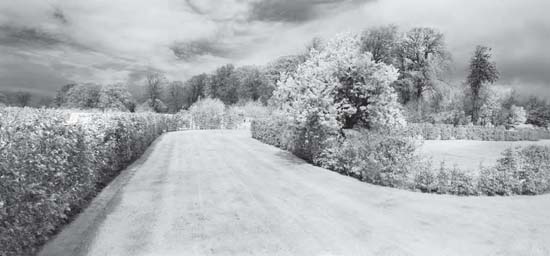
Fig. 15 ISO 200 at f/5.6 for 2 seconds per exposure for three frames. Stitched using Panorama Maker software.
I shot true infrared for a while on one of my Fujifilm S2 cameras fitted with a Hoya 77 mm R72 filter I had made by special order. The pictures looked great but not for the album. They were just too different from the normal pictures and upset the style. This picture of Weddeburn Castle in Scotland is 4 feet wide on the wall above the bride and groom’s bed.
WEDDING MUSIC FOR SHOW REELS AND VIEWING SESSIONS
I often get asked what music we use in the viewing or salesroom when we are presenting our clients with their pictures for the very first time. My ans wer is we choose music that fits with the style of the client. There are classic tracks that always go down well and others that are best avoided. I chose to list a few of the tracks to avoid as it makes a more interesting read.
Music you should NOT use in the Viewing Room!
